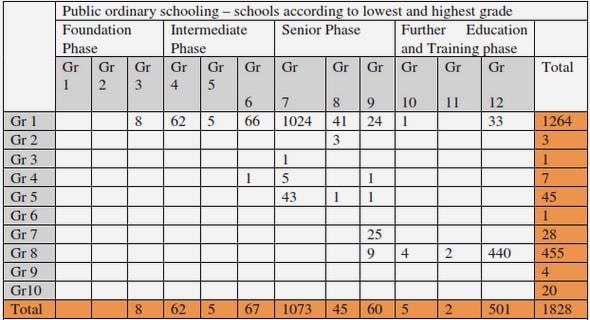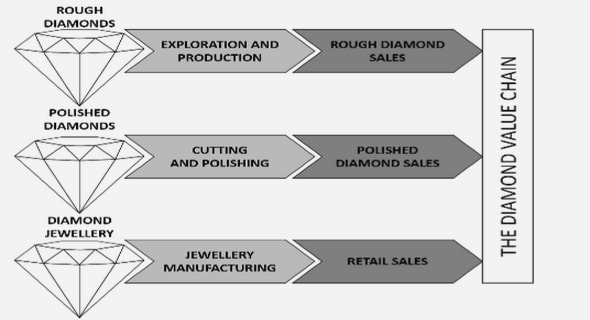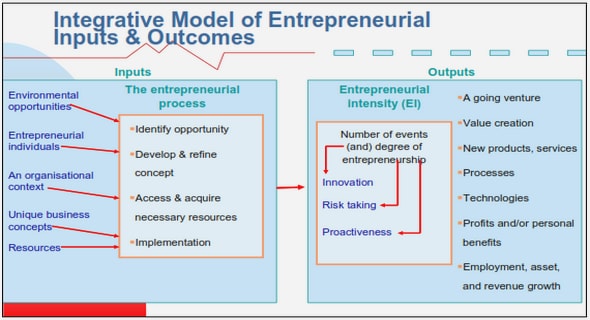Get Complete Project Material File(s) Now! »
Small electronically-commutated axial-flux permanent-magnet (AFPM) machines
Small electronically-commutated (or brushless) axial-flux permanent-magnet (AFPM) machines have been under keen research interest in the last decade as an alternative to conventional radial-flux PM machines, particularly for low-speed direct-drive applications (e.g. wheel motors and wind generators), due to their advantages of flexible disk (pancake) shape, compact and rugged construction, adjustable flat (plane) airgap, high power density and high torque-to-weight ratio [1-3].
The simplest AFPM machine structure uses an annular, slotted (or slotless) stator, containing the radially-arranged armature windings, and a disk-rotor, carrying PMs that produce the axial flux. The AFPM machine has a larger diameter-to-active-length ratio compared to its radial-flux PM counterpart. As a consequence, when the number of poles increases, the AFPM machine radial active part remains almost unchanged, while the axial length can decrease, so that the torque density increases. A main drawback of the single-stator-single-rotor AFPM structure is the unbalanced axial force between rotor PMs and the stator steel, which leads to thicker rotor disk and complex bearing arrangements.
Double-sided axial-flux inner-rotor permanent-magnet (AFIPM) machine topologies
Several AFPM machine configurations can be conceived regarding the stator(s) position with respect to the rotor(s) position, and the winding design, which allow selecting the best suited machine structure for a particular application. Among them, double-sided structures, in which the axial forces are balanced, may be built as
– single-rotor-double-stator structure (Fig.1.1), hereafter referred to as axial-flux inner-rotor permanent-magnet (AFIPM) machine topology, in which a PM rotor is sandwiched between two slotted (or slotless) stator cores having three-phase windings. For parallel connection of its armature windings, the AFIPM can operate even when one winding breaks down; on the other hand, a series connection is preferred because it can provide equal but opposing axial attractive forces on the rotor.
– single-stator-double-rotor structure (Fig.1.2), can have toroidal armature windings; as drawbacks of this structure compared to the AFIPM topology, one may point out that the stator fixture to the frame is more complex, and less space is left for the windings [4, 5]. In the axial flux permanent magnet machine two kinds of rotor can be used:
• axially-magnetized PMs are mounted on both surfaces of the inner-rotor disk (Fig.1.1), so that the basic magnetic flux flows axially through the PM-rotor disk (Fig.1.3, a);
• circumferentially-magnetized PMs are buried inside the rotor disk, in which case the main flux flows circumferentially along the PM-rotor disk (Fig.1.3, b).
Ideally, coreless rotor can be used for the AFIPM structure with surface-mounted rotor-PMs, since the magnetic flux travels through the PMs from one stator to another. This makes the manufacturing of the PM-rotor very simple and inexpensive, and is also favourable in low-inertia drive applications.
Comparative to its surface-mounted PM-rotor counterpart, the AFIPM machine structure with buried rotor-PMs has much thicker rotor disk, which consequently reduces the power density of the machine for the same outer stators, and increases the leakage flux at PM ends, because the PMs are surrounded by ferromagnetic material. Armature reaction is then higher in buried-PM structure than in surface-mounted-PM one. As an advantage, the buried-PM topology better protects the rotor PMs against mechanical stress, wear and demagnetization.
Slotted stators in the AFIPM machine increase notably the amplitude of the airgap flux density due to shorter airgap. This reduces the required amount of rotor-PMs, which yields savings in the AFIPM machine cost. Moreover, copper losses in slotted-stator AFIPM machines are lower than those of their slotless-stator counterpart. On the other hand, the use of slotted-stator armature winding results in significant cogging torque and content of harmonics in the back-emf waveform. Both problems may be tackled efficiently from the design point of view.
References [6,7] advocate the application of slotted-stator concentrated (fractional-slot) armature winding in AFIPM machines. When open stator slots and concentrated windings are used, prefabricated coils can simply be inserted around the stator teeth, and the winding process becomes very low-cost. Furthermore, the space needed by the end-windings and thus the Joule losses are minimized. However, due to the discrete position of concentrated-winding coils in stator-armature slots there are space harmonic components in the armature-reaction m.m.f. produced by the concentrated winding. The ‘main harmonic component’ is that whose wavelength is equal to the rotor pole-pair pitch, i.e. whose order is equal to the number of rotor pole-pairs. Only this main harmonic component of the stator-armature m.m.f (and not the fundamental or first-harmonic component) is torque-producing harmonic, as being synchronous with the rotor, and thus interacting with the PM-rotor excitation field to produce the continuous PM-alignment torque. Conversely, all other stator spatial slot harmonic mmf components rotate at speeds that are different from the rotor speed, and they can induce losses in the stator teeth and yoke, as well as in the rotor laminations and PMs, with undesired side-effects, such as the risk of possible thermal demagnetization of the rotor-PMs. Therefore, distributed three-phase winding design with integral slot/pole/phase number is an often choice for small AFIPM machines in direct-drive low-speed applications.
Through particular winding design AFIPM machines may have back-emfs of sinusoidal shape, in which case sine-wave current supply is recommended to avoid the occurrence of pulsating torques, or of trapezoidal waveform, when rectangular-current supply is required for smooth electromagnetic torque production.
Small AFIPM machine prototype
A small AFIPM machine prototype has been constructed to benchmark further research work of this thesis. It has a solid-iron rotor disk with surface-mounted Nd-Fe-B PMs, glued on both sides. Special PM-rotor construction has been adopted, by manufacturing reasons, with two distinct PMs for each rotor pole, i.e. one of rectangular flat shape, the other one loaf-shaped (Fig.1.4).
Each of the twin slotted stators is made of steel-sheet (M400-50A) rolled in circular form, and carries a three-phase distributed armature-winding inserted in the 25 slots (Fig.1.5).
The rotor shaft and the two bearings of different size (Fig.1.7) are made from steel (OL 38). For separating the two stators and for increasing the stiffness of the whole machine structure, a steel spacer is used.
Outline of the thesis
The research work contained in this thesis is concerned with small brushless AFIPM machines having surface-mounted Nd-Fe-B rotor-PMs and three-phase slotted-stator distributed armature windings, which are most suitable for low-speed direct-drive applications. The primary reasons are that, the fixture of external stators may be arranged easily, and the axial loading of bearings is rather small due to the internal rotor topology. However, in direct-drive applications, the electromagnetic torque quality being an important issue, the AFIPM machine designer has to fulfill the task of minimizing the torque pulsations as a sum of cogging (or detent) torque and torque ripple [4, 8]. Cogging torque originates from the tendency of rotor-PMs to align themselves with the minimum reluctance path given by the relative position between rotor and stator. Torque ripple arises from distortion of the sinusoidal back-emf and armature-winding current. Primarily, the electromagnetic torque quality issue in small brushless AFIPM machines can be addressed by minimizing cogging torque and back-emf harmonic contents from the design point of view.
In this context, the first objective of the thesis is to propose an analytical approach to the preliminary electromagnetic design of the small AFIPM machine, whose results are then confronted with the design data of the machine prototype purposely built in the early stage of the thesis work.
The second objective of the research is to develop a two-dimensional finite-element field modeling for further design optimization of the considered small AFIPM machine for torque quality improvement by rotor-PM shape modification.
The last objective of this thesis is to carry out extensive experiments and tests on the small AFIPM machine prototype, in order to validate its finite-element numerical modeling, as well as to check the feasibility of its electronic commutation and basic control scheme.
The thesis is structured in five chapters whose short presentation is given herewith. Chapter 1 briefly reviews small double-sided AFPM machine candidate topologies for low-speed direct-drive applications, and addresses the features of small AFIPM machines in such applications through a three-phase machine prototype built to be further studied in the thesis.
In Chapter 2, an analytical preliminary design based on general AFPM machine sizing equations is proposed for the small three-phase AFIPM machine prototype, which is then used to ascertain the dimensioning results and to enable further research study of the thesis.
Chapter 3 is the backbone of the thesis, developing the two-dimensional finite-element field modeling and design optimization of the small prototype AFIPM machine with the view to reducing the airgap flux density space-harmonics and the cogging torque by rotor-PM shape modification. The original finite-element numerical model is validated against experimental measurements on the small AFIPM machine prototype.
Chapter 4 presents the results obtained with a dedicated laboratory set-up built to experimentally characterize and check the proper operation of the small three-phase AFIPM machine prototype under electronic self-commutation and basic control.
In the last chapter, general conclusions of the thesis research are drawn, main original contributions of the author are emphasized, and some hints for future research are provided.
Table of contents :
1. Small electronically-commutated axial-flux permanent-magnet (AFPM) machines
1.1. Double-sided axial-flux inner-rotor permanent-magnet (AFIPM) machine topologies
1.2. Small AFIPM machine prototype
1.3. Outline of the thesis Selected references
2. Analytical preliminary design of small AFIPM machines based on general sizing equations
2.1. General sizing equations of AFPM machines
2.2. Analytical approach to the preliminary design of the small AFIPM machine under study
2.3. Conclusions
3. Finite-element modeling and design optimization of the small AFIPM machine prototype
3.1. Introduction
3.1.1. Single-objective optimization
3.1.2. Multi-objective optimization
3.2. Harmonic analysis of AFIPM machine
3.2.1. Back-emf harmonics
3.2.2. Airgap flux-density harmonics
3.3. Finite-element modeling and analysis of AFIPM machine
3.3.1. Investigation tools
3.3.2. 3-D finite-element modeling and analysis
3.3.3. 2-D finite-element modeling and analysis
3.4. Analytical field modeling of AFIPM machine
3.5. Reduction of airgap flux-density space harmonics of AFIPM machine by rotor-PM shape optimization
3.6. Design optimization results
3.7. Conclusions
4. Experimental characterization and basic control of the small AFIPM machine prototype
4.1. Experimental characterization of the small AFIPM machine
4.2. Electronic commutation and basic control of the small AFIPM machine
4.3. Description of the experimental hardware and software
4.4. Experimental results
4.5. Conclusions
5. General conclusions
Appendices
Author’s CV and papers related to the thesis
Résumé étendu


